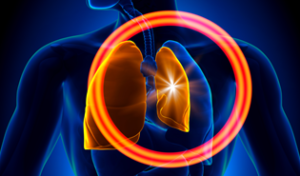


Decompression Needle for Tension Pneumothorax
Tension Pneumothorax (TP) is the second leading cause (33%) of potentially preventable combat deaths and constitutes 5% of all fatal military injuries. It also occurs in the civilian world, resulting from both penetrating and blunt trauma, as well as high lung pressures during mechanical ventilation and CPR.
Early diagnosis and swift treatment of TP, in a matter of minutes, is critical for patient survival. However, correct diagnosis of this condition is difficult during emergencies. Presentation of the classic signs and symptoms are highly variable and, in most cases, time and treatment environment do not permit diagnostic confirmation by chest x-ray, ultrasound, or other means. Thus with current technology, practitioners frequently withhold treatment due to fear of causing patient harm or, conversely, inadvertently intervene on a healthy lung and worsen the patient’s condition.
Current treatment of TP is to place a hollow needle into the chest cavity (and one of the two pleural spaces) to release the pressure. Military Tactical Combat Casualty Care guidelines recommend this “needle decompression” in all casualties with chest trauma and progressive respiratory distress, as well as bilateral decompression in casualties with torso trauma and no pulse. The military considers this skill so critical that it teaches it to even non-medical combat lifesavers. In the civilian arena, it is standard practice for physicians, nurse practitioners, physician assistants, and pre-hospital paramedics to perform the procedure.
While simple wide-bore needles for the treatment of TP are widely commercially available, all of the currently available devices have multiple disadvantages. In support of AFMSA, MHRF will partner with the developers of a disposable medical device that eliminates many of the problems with the traditional diagnosis and emergent treatment of TP. Due to the improved safety and reduced risk profiles, providers can use the DDN with confidence on all patients who potentially have tension pneumothorax. The device will be quickly deployable in the field, with minimal steps for use, and include an integrated one-way valve to prevent open pneumothorax at all stages. The decompression needle will mitigate iatrogenic injury to the lungs or heart via a non-lacerating, blunt tip, and allow for simultaneous use on both right and left sides (bilateral) in all cases as needed.
